Climate change is causing sea levels to continue to rise, and billions of people will lose their homes by the end of the century. Solutions are required. Some regions are already preparing for this.
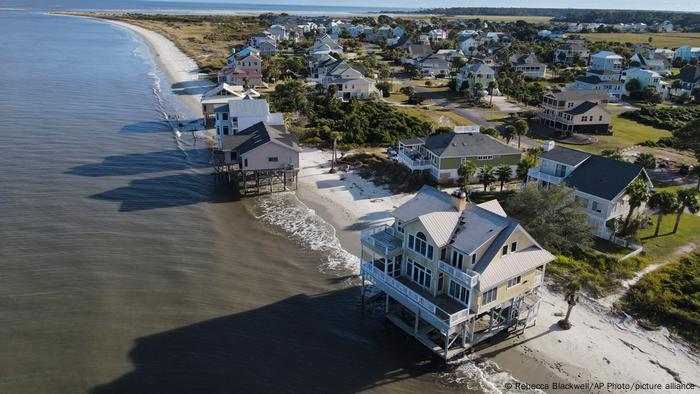
The water is rising on the coasts of all continents – like here the US
People in the Netherlands are true masters of this: through clever dike construction, they have wrested meter by meter of land from the sea over decades. In front of Dubai, among other things, “The Palm”, an artificial island with luxury hotels and noble villas, was created by sand heaps. So, it's all just a question of good construction planning – and people get what they need from the sea?
Not at all, because the sea level is rising. Increasingly frequent extreme weather conditions off the coasts regularly cause flooding worldwide. And in more and more coastal communities it is no longer just a matter of saving your belongings from the water masses.

In the coming decades, billions of people will be affected by rising sea levels, only a few will have the means to adapt
Adapting to climate change can also mean moving away and giving the land back to nature . This is also referred to as climate-related migration or depopulation. What is meant is the controlled retreat of people from areas that are becoming uninhabitable due to ongoing climate change.
Large cities could also be affected. In the Australian metropolis of Sydney on July 3, torrential rain washed over dams, swept away river banks and forced more than 30,000 people to flee their homes. The areas north and south of the city were inundated with five feet of rain in just 24 hours. According to the Australian Weather Service, that is as much rain as it normally rains in the state of New South Wales in a whole year.
After masses of water had already inundated the city in April, the governor of the state admitted that such events ” will occur more frequently” and that it is necessary “to respond to a changing nature”.
How does depopulation work?
Ordered depopulation is about people permanently leaving endangered areas. This can be done preventively or directly after a disaster. This is what happened in New Orleans, for example: Hurricane Katrina devastated large parts of the city at the mouth of the Mississippi in 2005.
“Climate change is affecting people all over the world. And everyone is looking for ways to deal with it in some way,” said disaster researcher A.R. Siders in a study from June 2021. The scientist conducts research at the University of Delaware in the USA. “If people left known danger zones, that would be effective protection. However, this possibility is still often not considered.”
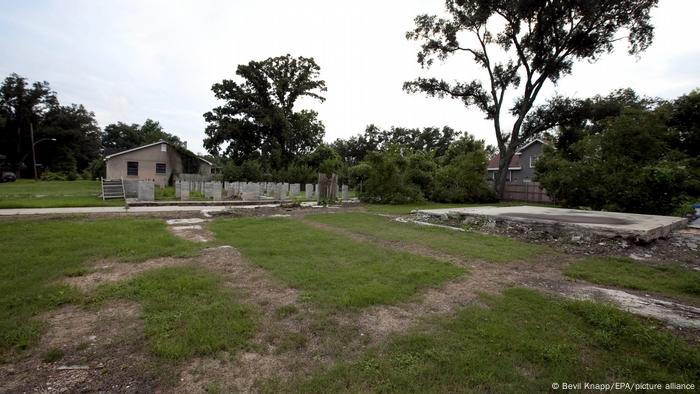
Some neighborhoods of New Orleans were completely abandoned after the devastating flooding caused by Hurricane Katrina
In New Orleans, rebuilding programs have been launched for low- and middle-income families. Their new houses are now a little higher, far enough away from the flood plain. There are comparable programs all over the USA: In 2017, the FEMA Hazard Mitigation Grant Program bought more than 43,000 houses in flood-prone areas – in the USA itself and also in extraterritorial states.
But such resettlements are not easy. On the one hand, the bureaucratic effort is immense. And there is always the danger that social inequalities will increase when established communities are displaced.
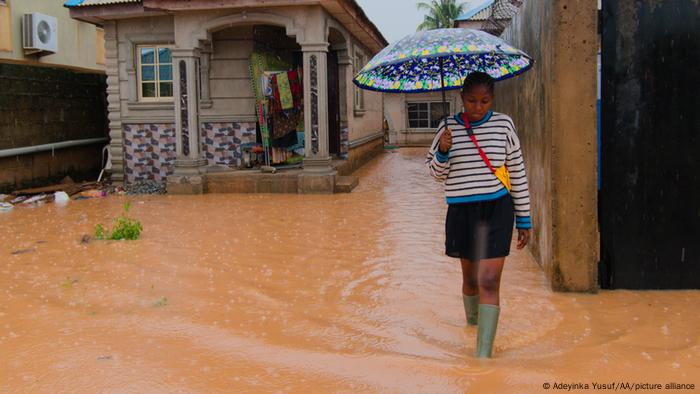
As the largest city in Nigeria, Lagos is only a few meters above sea level – making it particularly vulnerable to rising sea levels< /p>
“Ordered depopulation of an area is not something that can easily be reversed,” Miyuki Hino emphasized back in 2017 in a report for Carbon Brief, a British online site specializing in climate science and climate and energy policy. And , said Hino, then a graduate student at Stanford University: “Relocations bring with them social and psychological problems that affect those affected; Especially when the old home is a cultural heritage or a long-term family home.”
Relocation abroad before climate change
Kiribati is an island republic in the central Pacific that is just above sea level. Kiribati is one of the countries in the world that are first threatened by sea level rise. Some of its islands are no longer habitable.
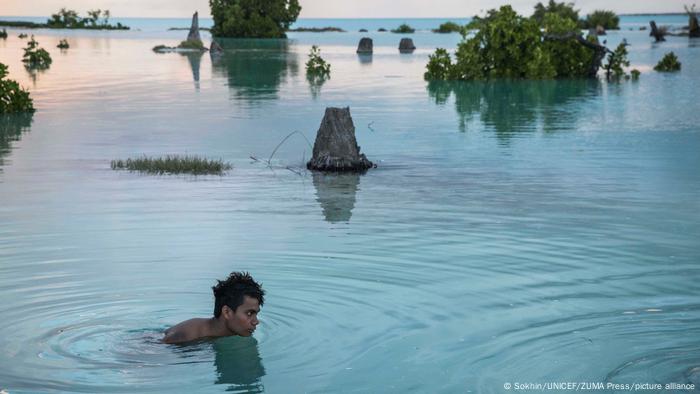
The residents of the Kiribati island chain are still making it to deal with the constant floods
The Intergovernmental Panel on Climate Change (IPCC) predicts that sea levels will rise by 10 to 25 centimeters by 2050. Experts expect this trend to continue until the end of the century. Kiribati will then sink into the sea.
In 2014, the government bought land in Fiji so its citizens could be resettled there. However, it recently announced plans to use this land for agriculture to feed the population, in cooperation with China. Kiribati's government is also developing training programs with Australia and New Zealand. They are intended to provide the citizens of the small island state with the necessary skills to find work if they are forced to emigrate.
Renaturalisation of former residential areas
The government of the US state of New Jersey is also buying up land to prevent the dangers of climate change. In this case, we are talking about private houses in areas that are highly threatened by storms and floods as a result of climate change. This land is now being redesignated into recreation and nature reserves. It will serve as a “natural buffer against future storms and flooding,” according to the state Department of Environment.
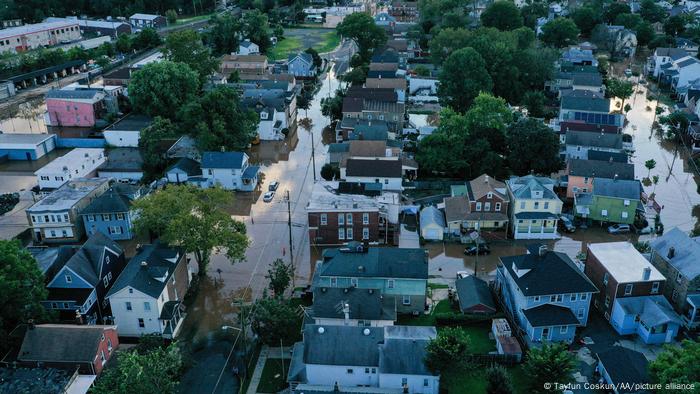 < p>Hurricane Ida devastated numerous cities along the US east coast in 2021, including Manville, New Jersey
< p>Hurricane Ida devastated numerous cities along the US east coast in 2021, including Manville, New Jersey
This resettlement program was launched in 1995 under the name Blue Acre. It was expanded after the devastating hurricane Sandy in 2012. Since then, more than 700 homes have been demolished in the flood plains of the Delaware, Passaic, and Raritan rivers and their tributaries.
“We're going to see more flooding in New Jersey in the future, so it's only fitting that we advance our Blue Acres program,” New Jersey Environmental Protection Officer Shawn M. LaTourette told NJ Spotlight News in October. “The question will be: How much land can the state buy, how many people will be willing to sell and what will it all cost?”
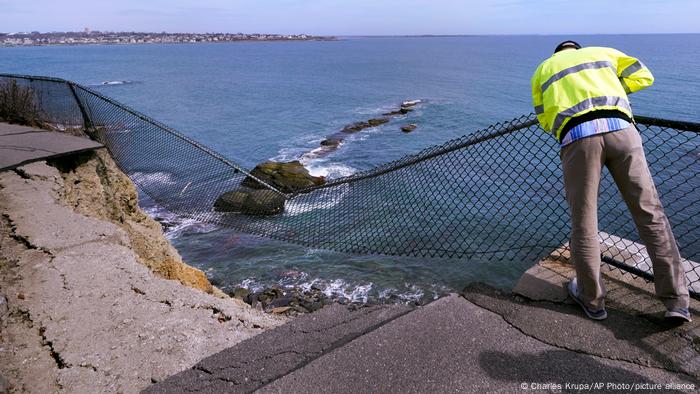
“Orderly depopulation is challenging and impractical in some places – but you can't stop the sea”, according to representatives of the Rhode Island Conservation Agency
But despite the ever-increasing dangers, it is by no means a matter of course that people would leave their homes to the rising waters. It is for most people on the coasts a frightening idea to know that the water is approaching, explained Hans-Ulrich Rösner, head of the Wadden Sea office of the nature conservation organization WWF, told DW. But “You can only do that if people are convinced of it.”
Flood plains: Give fields back to the river
The British Environment Agency also decided in 2006 to take a radical step. In the Humber Estuary in eastern England, west of Hull, flooding was a frequent occurrence at the confluence of two rivers. So the decision was made to convert 440 hectares of agricultural land into flood plains. A part of the dyke, which originally served to protect against flooding, was removed for this purpose.
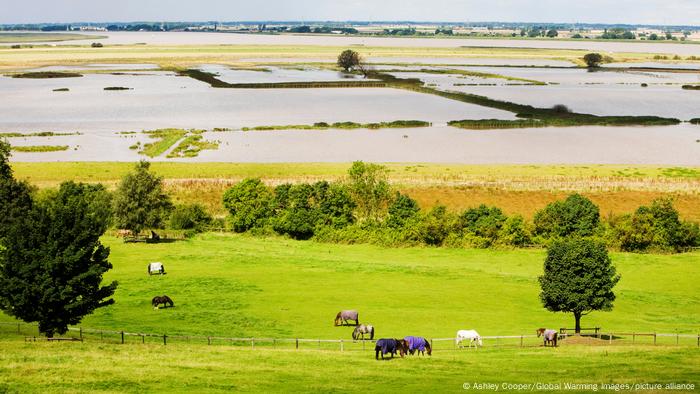
A newly created wetland area now provides protection the Humber Estuary communities from flooding
This is how the Alkborough Flats came about, at the time one of the largest flooded areas in Europe. This has reduced the risk of flooding for more than 600 properties. And farther upstream, fewer flood protection measures have been necessary since then. In the meantime, a large number of birds, fish, insects and plants have settled in the newly created wetland. This radical measure is not unique. In other countries, such as the Netherlands, India and Thailand, such flood plains help with flood protection.
Rising sea levels are forcing the metropolis of Jakarta to move
Indonesia is currently facing one of the largest resettlement projects in the world. The capital Jakarta sinks 20 cm every year, partly because far too much groundwater is pumped. With rising sea levels, more and more areas of the metropolis with ten million inhabitants are lost to the sea.
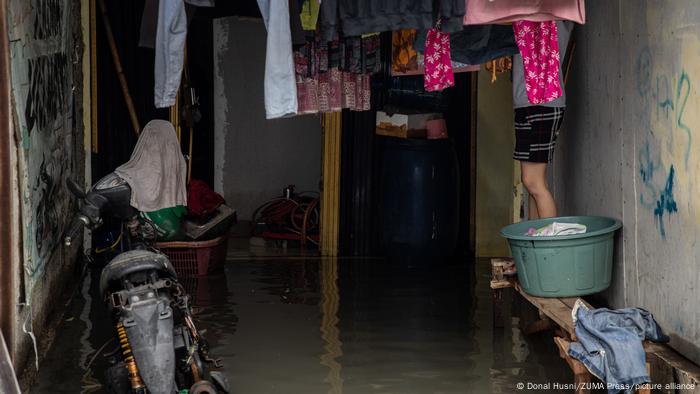
Many people in the lower-income parts of Jakarta have to deal with the rising water alone
The Indonesian government is therefore planning to move the capital to the island of Borneo, 2000 kilometers away. There's not much time left: Experts expect that most of North Jakarta will be submerged by the sea by 2050. Even if the government authorities will have moved to the new capital by then – where the millions of people in Jakarta's slums will move to remains an open question.